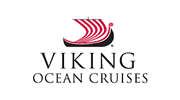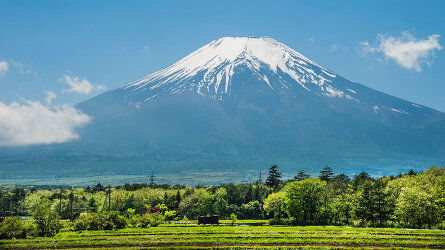
Overview
Itinerary
Embark your ship and settle into your stateroom. Cape Town enjoys one of the world's most picturesque settings at the foot of the iconic Table Mountain. The cosmopolitan city is the gateway to dramatic coastal splendor, a thriving wine country and a rich array of cultural venues that embody the spirit of the 'Rainbow Nation.' The city's heritage took root in Company's Garden, where 17th-century European settlers grew food to stock ships rounding the cape. In and around the celebrated Victoria & Alfred Waterfront, historic architecture and delicious cuisine reflect an array of African, Dutch, English and Malay influences.
Sail the Atlantic Ocean, divided in half, north to south, by the Mid-Atlantic Ridge. Longer than the Rockies, the Himalayas and the Andes combined, this underwater mountain range is the longest on Earth. As you sail, take advantage of the array of delicious cuisine offered on board. You may visit Mamsen's, our casual gourmet deli, any time from early morning to late at night for a taste of traditional Norwegian fare. Or, dine at Manfredi's and savor an authentic Italian meal, with options ranging from Milanese risotto to Tuscan inspired classics.
Situated between the sands of the Namib Desert and the surf of the South Atlantic, Lüderitz retains a Bavarian flavor from Namibia's days as German South-West Africa. Remarkably, the town has changed little since Germany departed in 1915. Stunning Art Nouveau buildings, seemingly relocated from Europe, lend a surreal feel to a simple stroll as the aromas of kreppel pastries waft from a bakery and the Gothic-style Felsenkirche, or Rock Church, looks on from atop Diamond Hill. The Lüderitz Museum helps to make sense of this remarkable dual canvas of Europe and Africa.
Named for the whales that lured fishing vessels to its plankton-rich waters, Walvis Bay, or 'Whale Bay' in Afrikaans, enjoys a deep harbor and the protection of the Pelican Point sand spit. The port was long valued by explorers making their way around the Cape of Good Hope, but it was the British who occupied it by 1884 and eventually incorporated it into their Cape Colony. Today, Walvis Bay is the gateway to the rich culture of Swakopmund, where German architecture recalls the settlers who established this coastal city in 1892 with the support of the kaiser.
Walvis Bay, a coastal gem on Namibia's western coast, is home to striking natural beauty. Its saltwater lagoon hosts one of Africa's largest concentrations of flamingos. The Namib Desert, the world's oldest, surrounds the city with stunning red sand dunes reaching to the coast. Dune 7 is the region's tallest and most spectacular, its peak measured at more than 1,256 feet tall. Adventure seekers can sandboard, kitesurf and explore the desert's wildlife before partaking in Walvis Bay's vibrant culture and cuisine, highlighted by fresh seafood, including sought-after oysters.
Trace the Mid-Atlantic Ridge, an underwater mountain range longer than the Rockies, the Himalayas and the Andes combined. Its hidden towering peaks divide the Atlantic Ocean in half, North to South. As you sail today, savor a range of international cuisine on board. Choose from a variety of international flavors at the World Café, enjoy al fresco dining on the Aquavit Terrace, or regional specialties in The Restaurant.
Luanda is the most populous Portuguese-speaking capital city in the world and among the oldest colonial cities in Africa, having been founded in 1576 as São Paulo da Assunção de Loanda. Angola's primary port, as well as its major industrial, cultural and urban center, the city is a short drive from striking natural wonders, including the otherworldly landscape known as Miradouro da Lua ('Viewpoint of the Moon'). Here, millions of years of erosion have created a karst landscape with different colored strata that stretch toward the sea.
Follow in the wake of the great explorers, including Captain James Cook, who traversed these waters, claiming the island of South Georgia for Britain in 1775. As you sail, explore our well-curated Library, tucked in a private alcove of the Living Room, and select from a broad range of titles. Read a book by the Main Pool, a calming oasis in any weather with its retractable roof, allowing for year-round swimming.
Stretching between the west coast of Africa, Greenland and Brazil, the North Atlantic ocean is populated with volcanic islands, including Cape Verde and the Canaries. Renew your body, mind and spirit in our Scandinavian-inspired Spa, a Nordic sanctuary of holistic wellness, today while at sea. Whether you unwind in the Sauna, refresh in the Snow Grotto or take a dip in the Thermal Pool, you will feel recharged and revitalized.
Praia, the capital of Cape Verde, sits on the southern coast of Santiago Island. Founded by Portuguese explorers in 1615, it has grown into a cosmopolitan city, home to 90% of Cape Verde's population, and the archipelago's largest port. The Old Town, nicknamed the “Plateau,” sits in the heart of the city overlooking the Atlantic Ocean. Its vibrant Sucupira Market is renowned for its labyrinth of stalls selling local produce, as well as traditional clothes and handicrafts. The city's African ancestry is evident in its influence on the local language, food and culture.
The Cape Verde archipelago is group of ten volcanic islands that enjoy a year-round warm climate, turquoise seas and beautiful landscapes. The isles were first inhabited after their discovery by Portuguese sailors during the 15th century. Mindelo is the capital of São Vicente and birthplace of Cesaria Evora—a singer who rose from poverty to worldwide fame on the international stage. She performed her distinctive morna ballads to audiences while barefoot, which soon became her trademark style; her music is widely celebrated and is a part of Cape Verde's heritage.
The North Atlantic Ocean hosts an abundance of wildlife, many of which are endangered. Humpback whales, seals, manatees as well as petrels, auks and albatross call these waters home. Meet fellow guests and listen to the soothing sounds of classical music in the Living Room, an ideal setting for relaxation. Enjoy a cup of coffee or sip on a refreshing cocktail.
Santa Cruz de Tenerife exudes both Spanish flair and island tranquility, featuring painted buildings, shops and a city park where fountains and birdsong provide a soothing ambiance. Volcanic Mt. Teide, Spain's highest point, looms over much of the island. Its hills harbor fruit plantations and vineyards that produce some of Spain's finest wines. The Orotava Valley slopes down from Teide to the sea and Puerto de la Cruz; the former fishing village transformed into a spa town in the 19th-century and today invites a stroll amid its boardwalks, leafy squares and seaside charms.
Rising from the rubble of a devastating earthquake in 1960, today Agadir is a thriving modern city. European-style cafés line the avenues and boulevards resembling the atmosphere of a Mediterranean resort. The beach is a welcome attraction for locals and visitors alike, and the marina provides a scenic backdrop while shoppers browse a blend of locals stores and well-known international brands. For a more authentic experience, the Souk el Had (a local market) showcases traditional products, from rugs and leatherware to flavorful spices.
Situated on the shores of the Atlantic Ocean, Agadir is the capital of Amazigh culture—the Indigenous peoples of North Africa. Historians believe the Amazigh migrated to Morocco from the Middle East and are descendants of the pre-Arab population. Today, there is a resurgence to promote greater recognition of the Amazigh ethnic identity, with images and music infused in modern culture. Visitors can enjoy a warm welcome in the foothills of the Atlas Mountains and remote villages, and gain insight into their customs and traditions.
Casablanca lures visitors with its heady mix of neo-Moorish splendor and French influence. Known as 'Casa' to locals, its streets exude an atmosphere of bygone days. Made famous by the 1942 eponymous film, today it is one of Africa's most important ports. Parisian-style boulevards unfold past cafés and colonial buildings. The city's medina is a maze of warrens pulsing with old-world energy, the hollers of carpet merchants and the fragrance of incense. The most impressive structure is the Hassan II Mosque, the country's largest and most magnificent.
Casablanca is among the largest cities in the Arab world and is Morocco's economic powerhouse; its pulse reverberates through streets where traders, entrepreneurs and innovators converge. The city's bustling boulevards are a linguistic mosaic where Arabic, French and Berber dialects intermingle—a testament to Casablanca's cosmopolitan spirit. Its skyline, adorned with Art Deco gems, echoes its colonial legacy, while the Corniche, a scenic promenade along the Atlantic Ocean, frames this vibrant metropolis's shoreline.
Cádiz lies on Spain's breathtaking province of Andalusia and gained incredible wealth during the 18th century; riches from the Americas were unloaded here after the Guadalquivir River to Seville silted up. This scenic southern region is home the matador and world-class equestrian art. Seville, city of polyamorous suitor Don Juan, boasts plenty of its own glories. Its grand cathedral, Alcázar Palace and Tower of Gold were built from the coffers of Spanish kings, but its fiery flamenco defines its true spirit. It is best to ponder it all while sipping sherry at a bodega.
Known for its picturesque seaside promenade, the Algarve's second-largest city has a long history of fishing and shipbuilding that is equally noteworthy. Dedicated to this rich heritage, award-winning Museu de Portimão, housed in a restored 19th-century fish cannery, is one of the city's most fascinating draws. Its vibrant, historic center features an abundance of squares lined with cafés and ancient buildings, including the impressive 15th-century chapel Nossa Senhora da Conceição which, despite damage from an earthquake in 1755, retains its original Gothic entryway.
Porto holds a place of great traditional importance. The town lends its name to the port wine produced in the region and throughout the nation. Located along a rocky embankment, the city boasts picturesque neighborhoods, fashionable restaurants and lively markets. Like Lisbon, Porto has a rich past; its historic center is a UNESCO World Heritage Site of narrow cobblestone streets brimming with romantic buildings spanning the centuries and a Romanesque cathedral. At the riverside, small barcos rabelos, boats once used to transport casks of wine, paint a charming scene.
Vigo is steeped in a history that dates back to the Romans. Vikings once saw trade opportunities here and landed briefly on its shores. Soon, Vigo's strategic importance was recognized throughout Europe, resulting in raids by English privateer Francis Drake. Today, Vigo is one of the largest cities in Galicia, Spain's autonomous northwestern region that boasts a rich farming and fishing heritage. The city's markets still overflow with seafood and all the ingredients locals need to prepare traditional caldo galego, a hearty potato soup made with grelo, or broccoli rabe.
The stunning Atlantic setting of A Coruña lends this historic city a wide-open feel. The Roman-era Tower of Hercules is a lighthouse that has been in continuous operation since the 2nd century. The coastal San Antón Castle once defended northern Spain from seafaring intruders. The city is known for the historic row of houses along Avenida de la Marina; these 19th-century buildings are fronted by white-glazed glass balconies that, viewed side by side, form a wall of white. The city's bicycle-friendly promenade leads to the glass Millennium Obelisk monument and Orzán Beach.
Sail legendary waters, where medieval Europeans believed “there be dragons” beyond the ocean's horizon. As you sail today, attend an informative lecture or watch a film in our state-of-the-art theater. A range of insightful TED Talks and desination-inspired seminars are offered daily.
Honfleur is set along the Seine estuary and is considered one of the coastal jewels of Normandy. Dating back to the 11th century, this bustling port changed hands many times during the Hundred Years War, before finally coming under French control. A thriving commercial port until the 19th century, it has since become a popular destination for artists; they can be frequently seen perched at their easels along the old harbor. Honfleur is renowned for its historic houses, quaint galleries and charming cafes that line the water, as well as the timbered Church of St. Catherine.
Most famously known for its dramatic white-chalk towering cliffs, Dover is the nearest city to France across the English Channel. Its strategic location as a doorway into England has earned it the moniker 'Key to England.' As the port was under constant threat because of its location, the massive Dover Castle overlooking the channel grew over the centuries to become the nation's largest edifice and remains so today. Dover also served as a bastion and command center during World War II.
Greenwich, a borough of London, is home to the Royal Observatory. From here, the world's longitude is measured from the prime meridian, and Greenwich Mean Time sets the global time standard. At the port, the clipper ship Cutty Sark, one of Greenwich's renowned historic landmarks, is preserved as a fascinating museum. Upriver, London is home to Buckingham Palace, the Houses of Parliament and Westminster Abbey. In addition, this major economic and cultural hub boasts a long tradition of arts and architectural innovation—from Shakespeare's Globe Theater to West End musicals.
Greenwich is home to several iconic maritime institutions. Royal Naval College is a major symbol of Britain's seafaring heritage and the architectural centerpiece of Greenwich. It opened as a hospital for sailors in 1712 and served as the Royal Navy's educational institution from 1873 to 1998. Today, its hallowed halls whisper of the days when Britannia ruled the waves. The National Maritime Museum is the world's largest, chronicling England's seafaring endeavors in its compelling collection of art, maps and countless memorabilia, including the first marine chronometer. After breakfast, disembark your ship and journey home.
Life Onboard Viking Sky

Launched in 2017, the Viking Sky is an all-veranda ship, part of a fleet of award winning, state of the art ships incorporating all the comforts & luxuries you would expect from Viking. Read more

Viking are destination experts. With no casinos or children on board, you can be assured that the focus is firmly on enrichment and education. Read more

After a day of exploration or just to enhance the relaxation of a day at sea, the on-board Spa will leave you feeling recharged and revitalized. Read more

Viking offer eight on board dining options. Beer, wine and soft drinks are available with lunch and dinner at no additional charge of fee. Read more

Viking proudly includes all that you need and nothing you do not. A variety of features and services valued at $200 per person per day are standard inclusions in your cruise. Read more

Viking include one complimentary shore excursion in every port of call. Enjoy exclusive entry to cultural treasures and seldom-seen collections around the world. Read more

Viking Sky Reviews (5) Most Recent 'Viking Sky' Reviews
The only downside for us was ...read more the airline choice and final booking for flights seemed rushed with limited options. I realise we chose Singapore Airlines economy but on reflection it was a poor choice, crowded and uncomfortable. I think more time and advice from Global Journeys should have been available. The return flight took the shine off the experience.
The Baltic offers so much in scenery, culture and history in a compact area and charming ports along the way. We love the mid-size ships and there was no hassles or queues getting off or on, the organisation was well done. We were blessed with wonderful weather everywhere which even Viking couldn’t have planned, only two showers in the whole two weeks, so all the warm clothing and raincoats were hardly needed. Read more about Vikings cruises, it’s all true and book through Global Journeys, they never let us down.
Iceland was amazing and provided stunning scenery. The trip to the Golden Triangle was well worthwhile as an optional extension trip. The days at sea between Iceland and the Faroes and Faroes to Norway were relaxing and filled with interesting activities. Faroe Islands also had much to offer and the stop at Torshavn and included tour gave a real insight into the life of this remote place. The 4 stops in Norway were also lovely and the trips to Geiranger and Flam were excellent with great shore excursions by coaches winding up amazingly steep mountains with spectacular views.
Everything about the trip and Viking was excellent - so much so that we've booked another Viking ocean cruise for next year. Viking has spoilt us for all other cruise lines and we won't be looking further when seeking a company for our future cruising holidays. Thanks Jemma and Viking for a memorable and wonderful time.
Brochure

Viking Ocean Cruises (2024-26)
Availability Click on prices below to view cabin upgrades and details
Tour & cruises prices are per person. Prices shown have savings applied, are subject to availability and may be withdrawn at any time without notice. Pricing and trip details are correct at this point in time, however are subject to confirmation at the time of booking and are subject to change by Viking. For cruise itineraries, cabin images are sourced from Viking. These should be treated as indicative only. Cabin inclusions, upholsteries and room layout may differ to the image(s) shown depending on the ship selected and your sailing dates.








